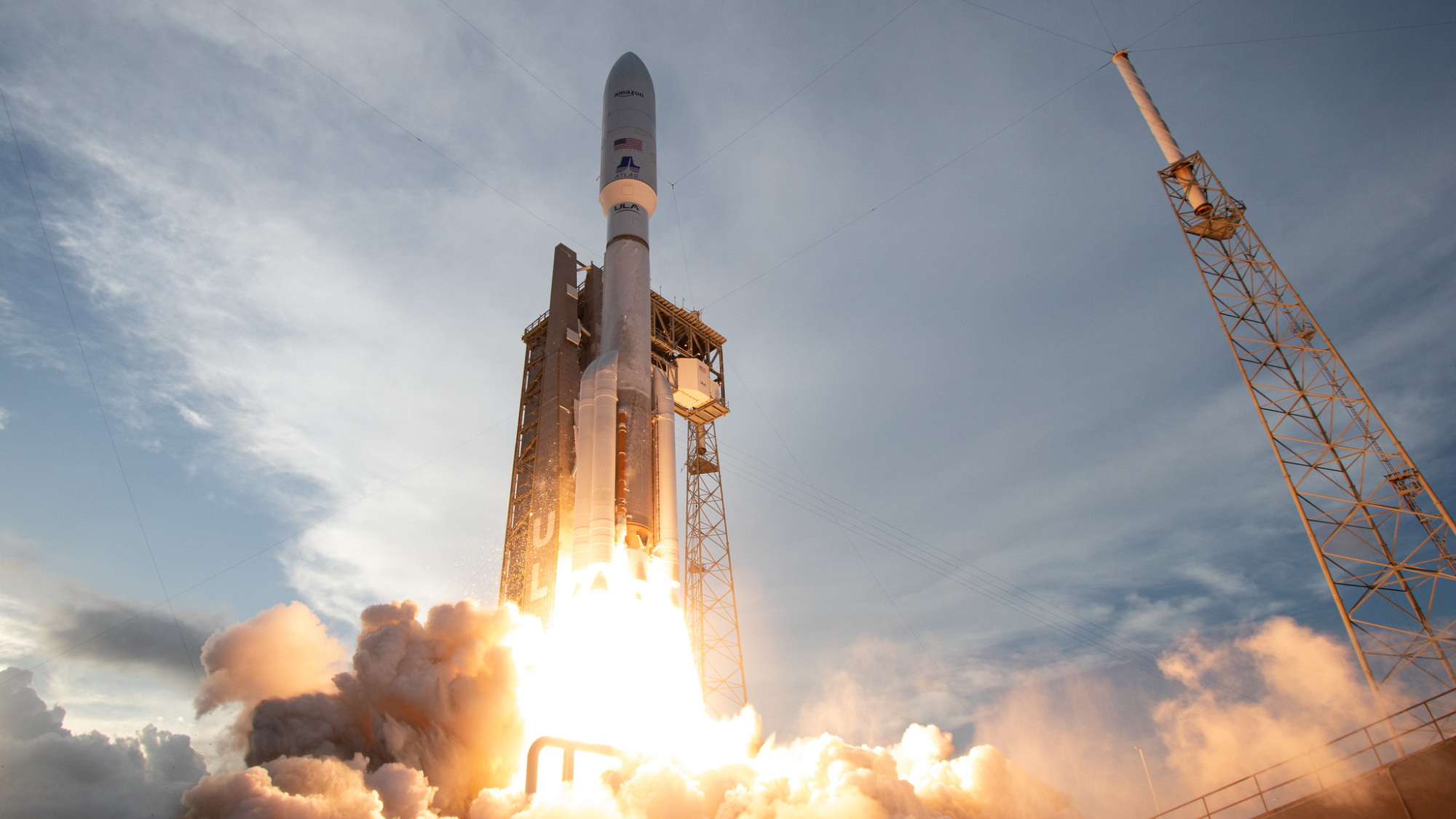
Update for 1 p.m. ET on June 16: The planned June 16 launch of the Kuiper-2 mission was scrubbed due to an issue with its United Launch Alliance (ULA) Atlas V rocket — specifically, "an engineering observation of an elevated purge temperature within the booster engine," ULA wrote via X on June 16. No new target launch date has been announced.
Amazon's second fleet of internet satellites now has a target launch date.
The stack of 27 satellites, part of Amazon's Project Kuiper constellation, is scheduled to launch on a United Launch Alliance (ULA) Atlas V rocket next Monday (June 16).
Liftoff of the mission, known as Kuiper 2, is set for 1:25 p.m. EDT (1725 GMT), from Space Launch Complex-41 at Cape Canaveral Space Force Station in Florida, according to Amazon.
Atlas V will launch the Kuiper satellites into low Earth orbit (LEO), where they will maneuver to join a small but growing constellation of satellites that will offer wireless, high-speed internet to customers within the fleet's range of operation.
The delivery of the Kuiper 2 satellites will double the size of Amazon's current constellation, to 54.
ULA launched the Kuiper 1 mission on April 28. The company called it a "new beginning" in a May 28 post that hinted that the launch date for Kuiper 2 was nearing.
Kuiper missions 1 and 2 are the first of 83 planned launches to help grow Amazon's Kuiper constellation. Not all of them will fly on the Atlas V, however; Amazon plans to launch batches of Kuiper satellites aboard ULA's new Vulcan Centaur rocket, Arianespace's Ariane 6 and Blue Origin's New Glenn.
The Project Kuiper constellation will eventually harbor more than 3,200 satellites, if all goes according to plan. That will still be far fewer than SpaceX's rival Starlink broadband constellation, which already provides service to customers around the world. Starlink currently consists of more than 7,600 operational satellites, and it's growing all the time.
But Amazon's internet architecture differs from that of Starlink, so the company may not need to rival SpaceX in sheer satellite numbers to provide comparable service. Project Kuiper will combine its LEO constellation with a global network of ground stations and on-Earth infrastructure running Amazon Web Services, according to Amazon's website.
The engineers of Project Kuiper are also focused on sustainability. Kuiper satellites are designed to minimize the risk of orbital debris, the company says. They are also working with astronomers on ways to reduce the satellites' visibility and interference with astronomical research and general stargazing.
The June 16 launch window for the Atlas V is 30 minutes long and opens at 1:25 p.m. EDT (1725 GMT). If it's available, Space.com will stream the ULA launch for Amazon on our homepage, beginning shortly before liftoff.
Editor's note: This story was updated at 1:55 p.m. ET on June 11 with the new target launch date and time. The previous target date was June 13.







